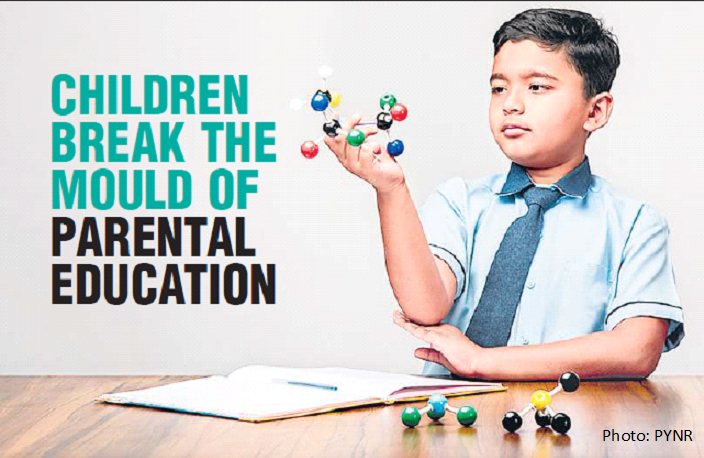Children Break the Mould of Parental Education
12 May 2024
Opinion: Prabir Kumar Ghosh and Chanchal Negi.
At the end of the first quarter of the 21st century, the vast majority of India’s population aged 5 and above, is literate through formal schooling. About 84 percent of men and 72 percent of women are literate, as per the Periodic Labour Force Survey (PLFS), 2021–22, Government of India. That being said, slightly more than one-fifth of the total population aged 5 and above is still not literate. It’s intriguing to explore the educational achievements of the children whose parents are among this group of non-literate adults!
There is a lot of literature that confirms that parents’ educational level has a very significant positive impact on a child’s educational outcomes. And much more prominent is the role of the mother’s education in the same. A well-known quote by Mahatma Gandhi reads, “If you educate a man, you educate an individual, and if you educate a woman, you educate an entire family.” But important insights can be drawn from the socio-economic profiles of the parents who are not literate through any formal education and whose children entered the education system for the first time in their families. These children may be termed “first-generation students.”
The PLFS data reveals that around 38 percent of the total population falls into the age group of 5–25 years. Among these young people, around 14 percent have parents who are not literate through formal education. The parents of approximately 14 percent of children are not literate. Out of this 14 percent, about 88 percent have gone to school, becoming the first in their families to step into the formal education system. And another 12 percent of the of the children have not received any formal education.
It was found that the majority of first-generation schoolchildren are from rural areas; about three-fourths belong to the bottom two expenditure quintiles; over 40 percent are from SC/ST communities; and about 60 percent are boys.
Further, approximately two-thirds of these first-generation students have completed their education up to the middle level; 18 percent have completed secondary or higher secondary education, and another 3 percent have reached higher education (graduation or post-graduation).
The data also reveals that the children of non-literate parents (12 percent) have not received any formal education either. They are mostly from rural areas and low-income groups. Around 85 percent of them are from the bottom two expenditure quintiles; more than 80 percent belong to rural areas; around 56 percent are boys; and 43 percent are from SC/ST communities.
Further probing on the whereabouts of the 12 percent non-literate children of the non-literate parents reveals that approximately 22 percent of these children are engaged in direct income-generating activities, and another 10 percent are involved in indirect economic activities for their families. Around one-fourth of them are involved in domestic duties, like household chores, caregiving, and other responsibilities.
A little more than 5 percent of the non-literate children are disabled, and the largest proportion, approximately 41 percent, is neither participating in formal education nor engaged in any economic or domestic activities.
Such a situation may require targeted interventions aimed at improving access to education, economic opportunities, and support services for individuals in this demographic group. While there are already many scholarship programs and initiatives to ensure that financial barriers should not be a reason for any child to remain uneducated, many children are still out of the education system.
As goes the Tibetan proverb, “A child without education is like a bird without wings,” it is crucial that every child be enrolled in school. This will require necessary support for first-generation students, both academic and financial, and mentorship as well as career counselling programs. Also, policymakers can prioritise focused initiatives aimed at uplifting non-literate individuals, especially parents, to break the cycle of intergenerational illiteracy. Given the significant influence of parental education on children’s educational achievements, policies can focus on empowering parents, particularly mothers who are under 50 years old, through literacy programs and adult education initiatives.
In summary, many children who have already broken the barriers in their families and have set foot into the classroom have paved the way for future generations. But for the other less fortunate children, the constraints are many, due to which they remain stuck in the cycle of illiteracy, struggling to break free. Overall, a concerted effort from policymakers, educators, and community stakeholders is imperative to create an inclusive and equitable education system that enables every child to reach their full potential.
The authors are Prabir Kumar Ghosh (Sr. Fellow) and Chanchal Negi (Research Analyst), at the National Council of Applied Economic Research.
Published in: The Pioneer, PYNR, 12 May 2024






